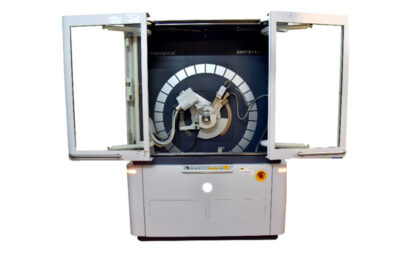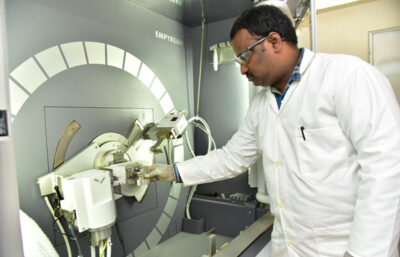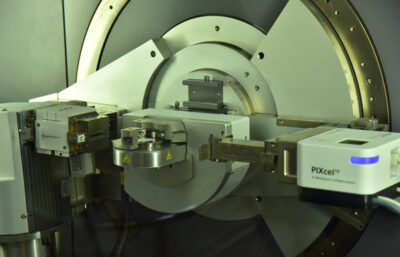X Ray Diffractometer
Make : Malvern Panalytical (Netherlands)
Model: EMPYREAN with PIXCEL detector
Applicable Fields
- Pharmaceuticals
- Plastics, rubbers, polymers
- Minerals, metals, geologicals, catalysts and glass
- Semiconductor, solar and electronics
- Powders, pigments, coatings and ceramics
- Forensic science, Biopharmaceuticals, biotechnology and nanotechnology.
Unique Applications to Pharmaceutical Industry
- Applicable to API, Drug products, Pre- formulation optimization studies
- Polymorphs detection and quantitative determination
- Amorphous and crystallinity quantitative determination
- Structures of variable hydrates, solvates investigation.
- Method development, optimization and validations as per ICH guidelines criteria and requirement.
Functioning
- X ray diffractometers consist of three basic elements: X ray tube, sample holder, X ray detector
- X rays are generated by the cathode ray tube by heating the filament to produce electrons, accelerating the electrons towards target material by applying voltage and bombarding the target material with electrons. As the sample and detector are rotated, the intensity of the reflected x rays is recorded.
- X Ray detectors are of three types: Traditional point detector, Position sensitive line detector and Pixcel detector.
Advanced Features:
- Malvern Panalytical is the world leader in X- Ray technology.
- Intelligent 3 rdGeneration EMPYREAN Diffractometer.
- Unique Malvern Panalytical Bragg Brentano HD Optics (BBHD)
- The Pixcel 1D detector is the only detector that can be used as point, line and area detector.
- Pixcel detector can measure upto 255 times faster than the traditional point detectors available in the market.
Instrument Capabilities
- Empyrean platform with Pixcel detector has high resolution theta- theta goniometer is a true multipurpose research diffractometer.
- Powerful non destructive technique for characterizing crystalline materials and provides information on structures and phases of materials
- Requires minimal sample preparation
- Conventional PXRD systems have LOD in the range of 1.0-2.0% whereas latest generation PXRD with Pixcel detector has brought down this value to about 0.1- 0.2% level (Available in our lab)
- Excellent detection and quantification limits
- Pixcel detector has unrivalled signal to noise ratio and unmatched dynamic range and linearity.
- Qualitative and quantitative data interpretation technique.
- Ability to measure all sample types from powders to thin films and from nanomaterials to solid objects on a single instrument.


